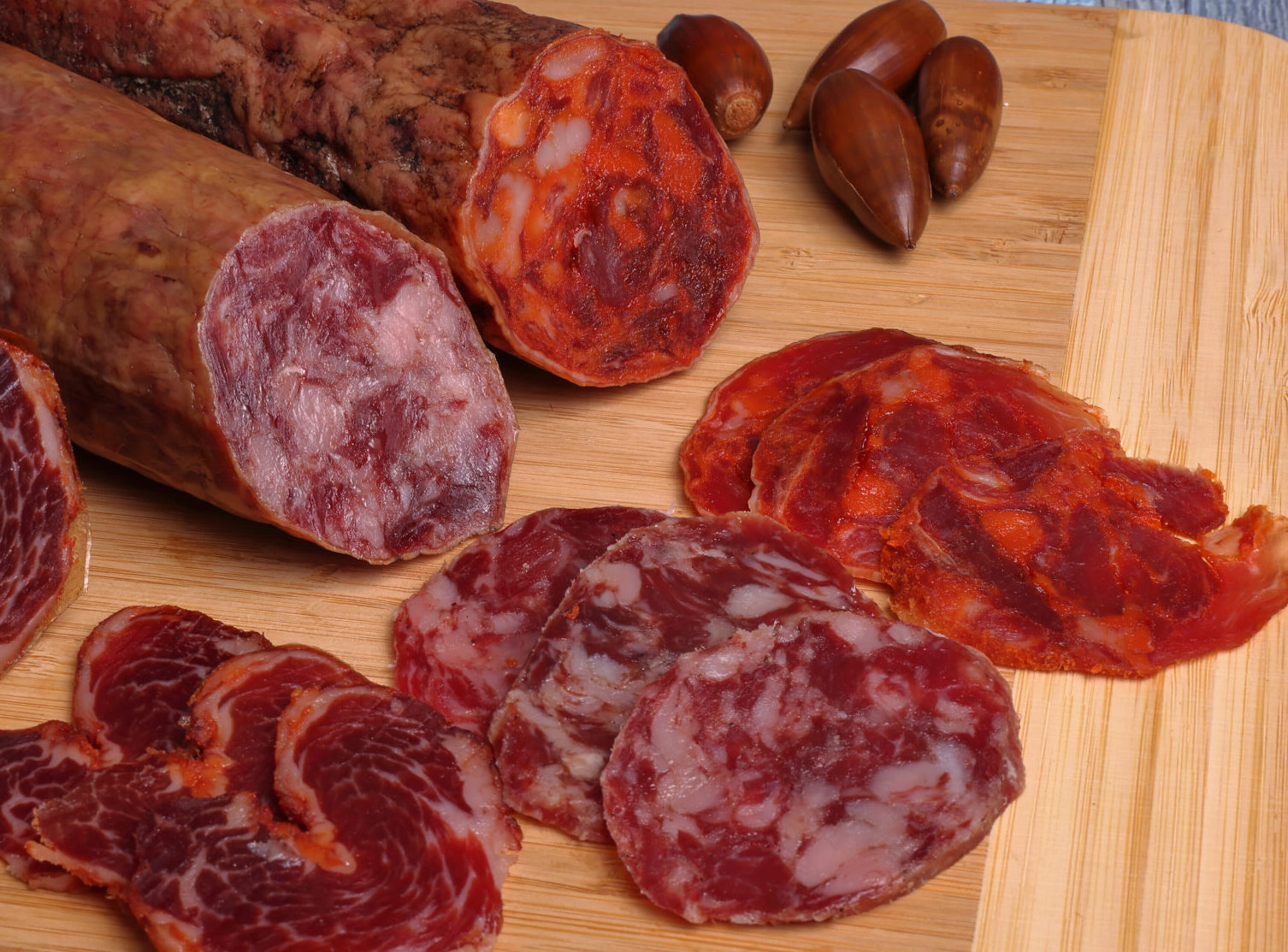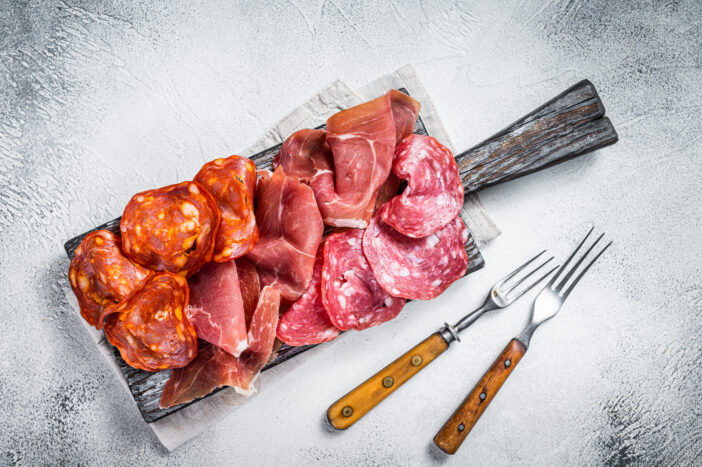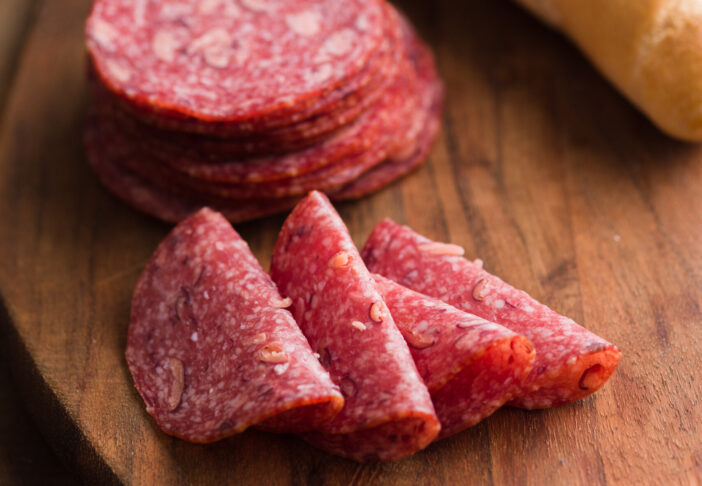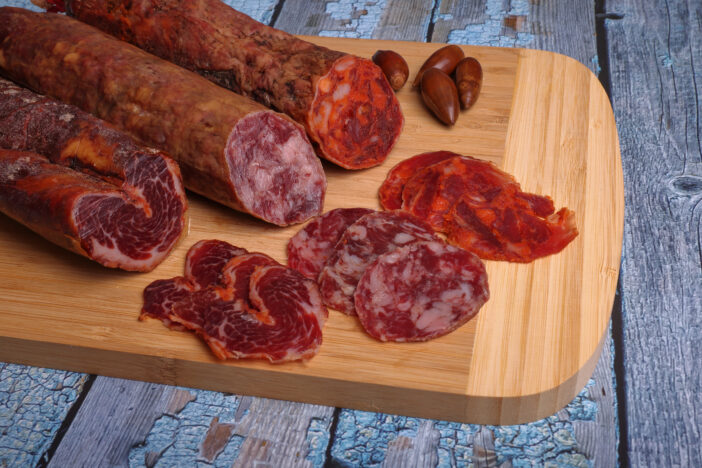5 Chorizo vs Pepperoni Facts for Better Pizza Choices
Chorizo and pepperoni offer distinct flavors and textures: Chorizo is bold and smoky with pimentón, garlic, oregano, and thyme, while pepperoni is tangy and slightly spicy with paprika, cayenne pepper, fennel seed, anise seed, and garlic powder.

Imagine biting into a slice of pizza topped with spicy, flavorful meat— but are you team chorizo or team pepperoni? Let’s dive into the distinct taste profiles of these popular sausage choices to see which one truly ignites your palate.
Disclosure: As an Amazon Associate, this site earns from qualifying purchases. Thank you!
Historical Origins of Chorizo and Pepperoni

Chorizo in Spanish Cuisine
Chorizo is a staple of Spanish culture, originating from the Iberian Peninsula and becoming popular by the Middle Ages. Made from coarsely chopped pork and seasoned with pimentón (smoked paprika), chorizo’s deep red color and robust flavor are key characteristics. This seasoning also aids in preservation. Regional variations exist, with some chorizos being spicy and others mild.
Pepperoni in Italian-American Cooking
Pepperoni is a 20th-century creation rooted in Italian-American cuisine. Developed by Italian immigrants in the U.S., it is an adaptation of southern Italian salami. Typically made from a mix of cured beef and pork, pepperoni is seasoned with paprika or chili pepper, giving it a smoky, spicy flavor. It quickly became a popular pizza topping, integral to American-style pizza.
Key Ingredients and Spices in Chorizo

Chorizo’s robust flavor comes from its distinctive combination of meats and spices:
- Pork: The primary ingredient, providing a rich, fatty base.
- Beef: Sometimes used alone or with pork, especially in northern Spain.
- Pimentón: Spanish paprika that gives chorizo its deep red color and smoky flavor.
- Garlic: Adds a pungent kick.
- Salt: Enhances flavor and acts as a preservative.
- Oregano and Thyme: Provide an earthy tone to the taste profile.
Key Ingredients and Spices in Pepperoni

Exploring the building blocks of pepperoni amplifies your understanding of its distinct flavor profile. Here’s what goes into this beloved pizza topping:
Types of Meat Used in Pepperoni
Pepperoni primarily utilizes pork and beef. The ratio of pork to beef can vary, but traditionally, a higher percentage of pork is used to achieve that classic fatty, rich taste. Occasionally, you’ll find recipes that stick purely to pork for a softer texture and a more pronounced flavor.
Common Spices in Pepperoni
The spice mix in pepperoni is critical for its tangy, slightly spicy taste. Key ingredients include:
- Paprika: Adds a vibrant red color and a sweet-smoky flavor.
- Cayenne pepper: Provides the characteristic heat.
- Anise seed: Imparts a hint of licorice.
- Garlic powder: Enhances the meaty flavor with a robust aroma.
- Fennel seed: Rounds out the spice mix with a touch of sweetness.
These spices combine harmoniously to create the spicy, bold profile that makes pepperoni an irresistible pizza topping.
Comparing Flavor Profiles: Chorizo vs Pepperoni

Taste Differences
When you savor chorizo, your palate is greeted with a bold, smoky flavor underscored by a distinctive spiciness from pimentón, which is smoked paprika. The seasoning mix often includes garlic, oregano, and thyme, adding complexity and a hint of herbaceousness. In contrast, pepperoni offers a tangy, slightly spicy taste that’s enhanced by a blend of paprika, cayenne pepper, and fennel seed. The unique addition of anise seed and garlic powder contributes to pepperoni’s characteristic zest, making it a favorite among pizza lovers.
Texture Variations
Chorizo’s texture varies depending on whether it’s fresh or cured. Fresh chorizo, often used in cooking, presents a soft, crumbly texture, easily breakable when cooked. Cured chorizo, however, sports a firmer, chewier consistency similar to a dry salami. On the other hand, pepperoni is uniformly semi-soft yet dense, offering a notably chewy bite that holds up well under high heat, making it ideal for baking on pizzas where it slightly curls at the edges and crisps beautifully.
Culinary Uses: Chorizo and Pepperoni in Recipes

Chorizo and pepperoni, while both popular in various dishes, offer distinct flavors and textures that shine in different culinary applications. Here’s how you can best utilize each in your cooking.
Chorizo
- Stews and Soups: Adds smoky, spicy depth to lentil soup or Spanish-style stews.
- Breakfast Dishes: Enhances scrambled eggs or frittatas with its robust flavor.
- Paellas: Essential in Spanish paella, seasoning the dish with its oils and spices.
- Tacos: Perfect as a flavorful taco filling with fresh cilantro, onions, and lime.
Pepperoni
- Pizza Topping: Crisps up beautifully, releasing flavorful oils that enhance the pizza.
- Pasta Sauces: Adds extra flavor when diced or sliced into marinara or Alfredo sauces.
- Bread: Embedded in dough for savory pull-apart breads.
- Salads and Sandwiches: Adds a tangy, spicy kick to Italian salads or sandwiches.
Nutritional Considerations: Chorizo vs Pepperoni

When choosing between chorizo and pepperoni, it’s important to consider their nutritional content. Let’s break down their caloric content and the differences in fat and protein.
Caloric Content Comparison
Chorizo and pepperoni vary significantly in their caloric content which could affect your meal planning:
- Chorizo: Typically, chorizo contains about 273 calories per 100 grams. This is due to its high-fat content, which results in a rich flavor.
- Pepperoni: Pepperoni, in stark contrast, has approximately 504 calories per 100 grams. This makes it a denser, more calorific option, largely because it’s often made with a mix of pork and beef.
Fat and Protein Differences
Choosing between chorizo or pepperoni might also come down to their fat and protein levels:
- Chorizo: Has about 23 grams of fat and 21 grams of protein per 100 grams. The type of fat in chorizo is typically more saturated due to the pork content.
- Pepperoni: Contains around 44 grams of fat and 22 grams of protein per 100 grams, pointing out its higher fat ratio, which contributes heavily to its caloric content.
Understanding these nutritional nuances can help you make a more informed choice based on your dietary preferences and nutritional needs.
Frequently Asked Questions
What are the main flavor differences between chorizo and pepperoni?
Chorizo is known for its bold, smoky flavor with spices such as pimentón, garlic, oregano, and thyme. Pepperoni, on the other hand, provides a tangy and slightly spicy taste, characterized by paprika, cayenne pepper, fennel seed, anise seed, and garlic powder.
What are the textural differences between chorizo and pepperoni?
Chorizo can be found both fresh, with a softer texture, and cured, offering a firmer bite. Pepperoni typically maintains a semi-soft yet dense texture, especially notable when baked on pizzas.
What are some typical culinary uses for chorizo and pepperoni?
Chorizo is versatile in dishes such as stews, breakfast plates, paellas, and tacos due to its robust flavor. Pepperoni, however, is most famously used as a topping on pizzas and also works well in pasta sauces, bread, salads, and sandwiches.
How do the nutritional values of chorizo and pepperoni compare?
Both chorizo and pepperoni are high in calories and fat, but they differ slightly in protein content and the type of spices used, which can affect their overall nutritional profile. Readers interested in dietary specifics should compare labels to choose options that best meet their nutritional needs.






